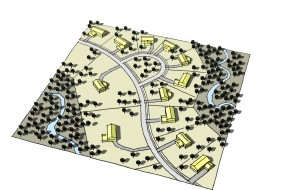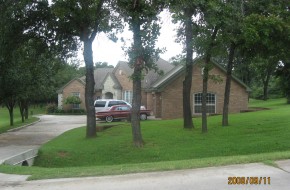Rural: Medium Intensity (RM)
Rural – Medium is similar to the Rural-Low Typology Area except that it allows higher housing densities. RM areas typically have lot sizes between 2 and 5 acres. These areas are usually located near a fire station, or at least have rural levels of fire service. .
Rural-Medium areas are typically located adjacent to Urban-Low and Urban Future typologies, which are areas intended to urbanize in the future. While there is no expectation for urban services, RM areas may have City water or have limited potential to connect to City water or sewer service, and may become more integrated into the urbanized area in the distant future. Commercial and light industrial uses may be appropriate provided they do not negatively impact the rural residential character.
Density Range
| Gross Density |
<0.5 du/acre* | |
| Lot Sizes |
2 acre minimum* | |
| Non-Residential Floor to Area Ratio (FAR) Range | n/a |
* Smaller lots (1 – 2 acres) may be allowed in cluster developments (see below) provided the maximum gross density of the project is maintained.
DEVELOPMENT POLICIES
1.0 Site Design, Building Form, and Location
1.1 Site Design
- Avoid development within or modification of 100 year floodplains or floodways.
- Design buildings and sites to complement the character of surrounding areas and not detract from the open character of the landscape.
- Utilize Best Management Practices (BMP) for stormwater.
- Cluster development may be appropriate provided it maintains rural character by preserving open space and/or Environmentally Sensitive Areas by clustering lots, and maximum gross density requirements are not exceeded. Open space and/or ESAs should be permanently protected through mechanisms such as conservation easements, dedicated zoning tracts, deed restriction, etc.
1.2 Location
- Support limited amounts of commercial in rural areas appropriate to the needs of rural residents and passersby. Commercial uses in rural areas should be located in small clusters either on uninterrupted arterials or at freeway interchanges.
2.0 Automobile and Pedestrian Connectivity
2.2 Pedestrian Connectivity
- Provide connectivity in the form of sidewalks or trails to existing public trails and parks that are adjacent to development.
























